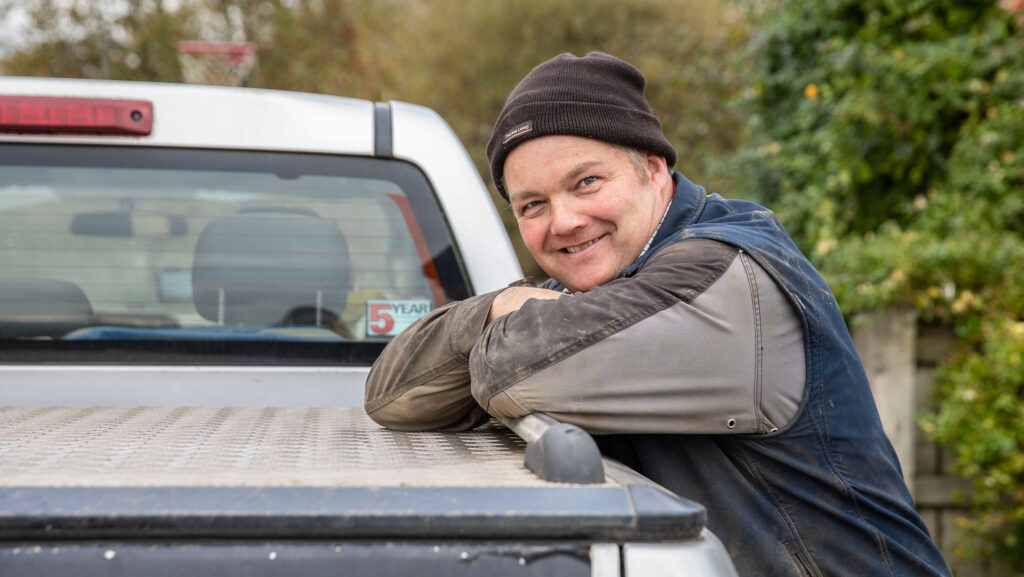Farmer Focus: New wheat and bean bicrop for next year
 Andrew Wilson © Angela Waites Photography
Andrew Wilson © Angela Waites Photography July clart to August dust soon got the combines rolling. Harvest here is about a week ahead of our average, with yields quite variable, but averaging a little better than expected.
Winter barley got tantalisingly close to 7.5t/ha, but didn’t quite make it. Wheat to press has averaged a shade over 8t/ha – OK, but not where it needs to be to make a living at current prices.
With less straw in the shed at the start of harvest than I’ve had for many years, it’s pleasing to be baling about 20% more yield than expected – for sure it will be needed this winter.
See also: Harvest 24: ‘It’s been a scarily tough season’
Spring barley here varies from half-decent yields and good quality just harvested to still green, but at least it looks like it was worth sowing.
Next year’s cropping plan includes a bicrop of wheat and beans.
These will be sown individually with the narrow coulters of our strip-till drill, sowing the beans first, then moving the tractor over half a row width on the GPS, and sowing the wheat at a normal depth between the bean rows.
We’ve concluded that, for the hassle of separating the subsequent produce, it’s worth it, although the crop needs to produce a more significant yield than the basic experiments of this concept have thus far.
We’ve trialled a few variations of the sowing theme on a fallow field this summer to decide our methods, so watch this space.
The sun and heat have allowed us to get some salt onto the sugar beet. I find that, because beet is a marine plant, this helps bring resilience to weather extremes, which hopefully translates into a yield boost.
The sunshine has also meant no straw turning, but has made maleic hydrazide applications to potatoes difficult and blight control expensive.
It will be interesting to see if these constant and increasing risks of growing root crops will be recognised by appropriate contract prices later in the year.
But if the beet contract price for next year is anything to go by, my peasant farmer status will be maintained.
As land is cleared, we’re busy direct-drilling cover crops and following our usual “spade first” cultivation philosophy of “as little as possible but as much as necessary”.
Winter cereal drilling is planned to start as usual in mid-September – knee-jerk reactions to single-season extremes rarely bring in the gold.


